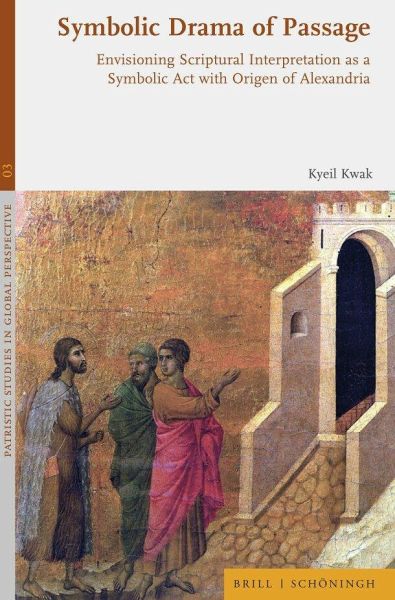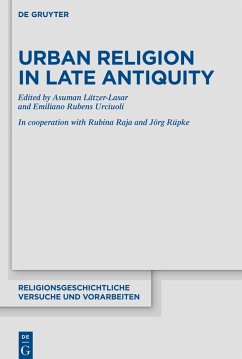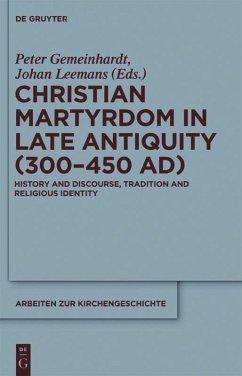Nicht lieferbar

Symbolic Drama of Passage
Envisioning Scriptural Interpretation as a Symbolic Act with Origen of Alexandria
Versandkostenfrei!
Nicht lieferbar
Origen envisioned scriptural interpretation as a symbolic drama of passage with the Logos-Christ, reuniting what is originally one. During the first three centuries C.E., s_mibeta___ni (symbol) became a prominent term along with __ni_Gammami_ (enigma) and ____Gamma____ (allegory) in forming a cosmic formula popular across the Mediterrnean world: symbol encodes the divine mystery in enigmatic forms and allegory decodes them. Having considered Scripture as full of divine symbols, Origen envisioned and practiced allegorical interpretation of Scritpure as a symbolic act of bringing, comparing, and...
Origen envisioned scriptural interpretation as a symbolic drama of passage with the Logos-Christ, reuniting what is originally one.
During the first three centuries C.E., s_mibeta___ni (symbol) became a prominent term along with __ni_Gammami_ (enigma) and ____Gamma____ (allegory) in forming a cosmic formula popular across the Mediterrnean world: symbol encodes the divine mystery in enigmatic forms and allegory decodes them. Having considered Scripture as full of divine symbols, Origen envisioned and practiced allegorical interpretation of Scritpure as a symbolic act of bringing, comparing, and matching its letters under the divine paideia of the Logos-Christ. In seeking three levels of scriptural meaning, Origen construed the cosmos as a tripartite reality and defined the essence of Christianity as a symbolic drama of passage. For Origen, the main actor of this drama is the Logos-Christ in the divine action of gradually leading his bride (i.e., the church) from the visible reality through the invisible reality to the divine reality.
During the first three centuries C.E., s_mibeta___ni (symbol) became a prominent term along with __ni_Gammami_ (enigma) and ____Gamma____ (allegory) in forming a cosmic formula popular across the Mediterrnean world: symbol encodes the divine mystery in enigmatic forms and allegory decodes them. Having considered Scripture as full of divine symbols, Origen envisioned and practiced allegorical interpretation of Scritpure as a symbolic act of bringing, comparing, and matching its letters under the divine paideia of the Logos-Christ. In seeking three levels of scriptural meaning, Origen construed the cosmos as a tripartite reality and defined the essence of Christianity as a symbolic drama of passage. For Origen, the main actor of this drama is the Logos-Christ in the divine action of gradually leading his bride (i.e., the church) from the visible reality through the invisible reality to the divine reality.













